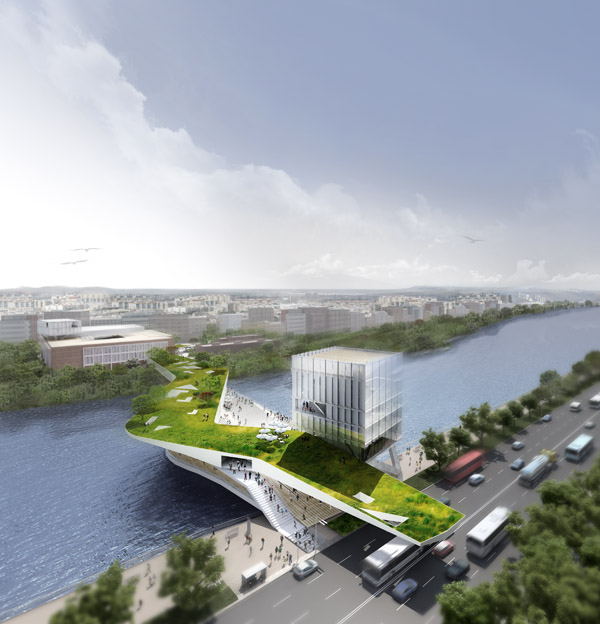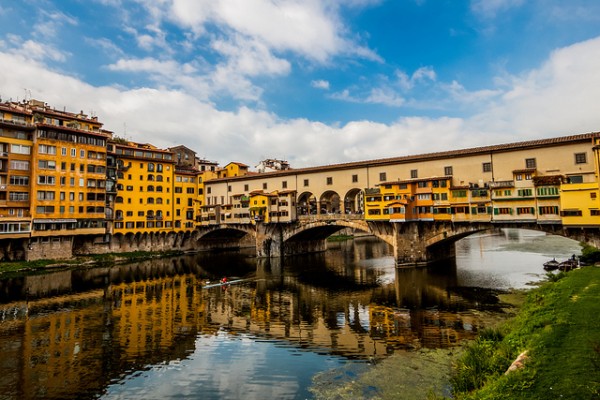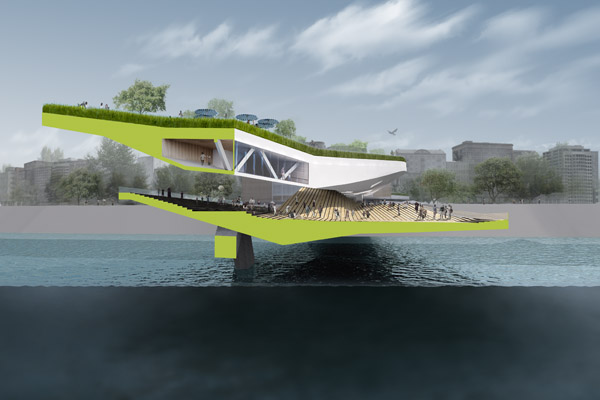Designs for bridges today seem to have only one purpose: to get people from one side of an impassable space to the other as quickly, and cheaply, as possible. This, however, was not always the case. From the Middle Ages through the Renaissance in Europe, habitable bridges such as the Ponte Vecchio in Italy or the original London Bridge in England were complex structures that created communal spaces, encouraged commerce and extended street life from one riverbank to another.
This old idea is being given new life with the Sevilla 24/7 Center, a proposal from architects Ayrat Khusnutdinov and Zhang Liheng that took second place in this summer’s SC2012 Links: Bridging Rivers competition. The bridge, designed for the city of Seville, Spain, is not just a means to cross the city’s Guadalquivir River, it is also a verdant urban park, an open-air market, a playground and a cultural center all in one.

The design for the pedestrians-only bridge consists of two distinct levels that connect two buildings on opposite sides of the river—a proposed Médiathèque library and an existing former tobacco factory that would be converted into an arts center, with a museum and a 450-seat auditorium.

“Integrating the existing building into our program, we create a mix of old and new urban fabrics, which is characteristic of this area where medieval and modern Seville meets,” said the architects in the proposal statement.

The upper level of Sevilla 24/7 meanders along a sinuous path, containing a thick layer of grass and trees to be used for outdoor recreation. Underneath, the more linear level would include shop vendors, grocery stores, cafes and nightclubs that can be found on most other city streets. On the Médiathèque side, the green upper level is also extended beyond the bridge’s basic footprint, cantilevering over an existing highway to provide additional views of the city skyline. Below, a broad piazza brings visitors directly to the water’s edge.

Along with providing a pleasant place for a leisurely stroll, the upper layer of the bridge would act as a green roof, providing shade from the strong year-round sun found in the Andalusian region of Spain and help reduce the heat-island effect of the city’s asphalt surfaces. The wide pathway would also act as a buffer against the noise of the city, giving visitors a tranquil place to view the city from a unique perspective. During inclement weather, there is also an interior walkway for visitors to be protected from the elements.